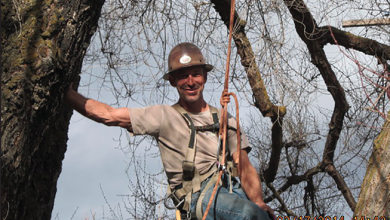Tree Economics 101…
I am often asked “What kind of tree should I plant?” My answer is always twofold: What is your water source, and how long are you planning on living here? So it seems my answer is actually a couple of questions…
Remembering that we should consider the 4 basic requirements of tree health.
1. Water 2. Elements 3. Temperature and 4. Space. If you can meet these crucial parameters, the world is your oyster! I am definitely an Oak kind of guy so my opinion is a little jaded, and for a couple of reasons, Oaks give a huge bang for your buck. They grow fast when young, they make good use of limited water, they are tough as nails, and draw animals and birds like moths to a flame.
As far as maintenance goes, Oaks require very little, if they come from good stock.
Trees that need very little to no maintenance are usually coniferous. Take Colorado blue spruce for example, if you have the room, it may NEVER need pruning! Larger stand alone conifers such as Pines, Redwoods (All 3 types) and Firs (true and Dougies) may need to have the big “in your face” dead limbs removed once every great while, but that’s about it. The great expense in the tree world are riparian species, i.e. Willows, Poplars, Ashes, Planetrees and the like. These types of trees love generous water, grow very fast, and need frequent maintenance (pruning). Trees that grow up in turfgrass develop root systems conditioned to a shallow and frequent irrigation regime, not good! If your water source is city supplied you need to make the most of it as summer prices for water can be ridiculous! If you have room for water storage, it shouldn’t be a big deal, there are a few options for this that work well.
The initial cost of a good tree and quality planting are, or should be, the greatest expense you will incur for the first 5-10 years. As time goes down the road, mulch and irrigation comes into play, as bigger trees need more water, and mulch makes whatever water you apply stick around…
One of the greatest arborists once told me: “if everyone just mulched and irrigated, we would be out of business” How true!
Ashland has the benefit of a relatively high water table, and infrequent deep watering motivates roots to explore, and given proper soil conditions this means DOWN! Once “tapped into groundwater, they do just fine with the exception of long drought cycles. Keeping stress and resultant strain to a minimum goes the furthest to keep your tree happy, but that too, can be overdone.
After you have picked out your tree, actually, strike that, BEFORE you pick out your tree, examine the planting site. You will need to make darn sure you have the basic four elements we discussed earlier (W.E.T.S) and the most important, drainage. If the planting hole doesn’t drain, it won’t matter, the tree is doomed before it ever leaves the gate! Plant high and with a firm foot, the tree will take it from there.
Be well, and enjoy your trees!



